Over the coming months, you might suddenly find yourself and other shoppers whistling “Sunny Day, Sweepin’ the Clouds Away” as you walk through your local supermarket’s produce aisle. That’s because fruit and vegetables are slowly being rebranded as Sesame Street edibles, thanks to a sweeping campaign with the Produce Marketing Association called Eat Brighter, which allows fruit and vegetable companies to use Sesame Street characters free of charge. Get ready for Cookie Monster grapes, Big Bird zucchinis, and maybe even Bert and Ernie rutabagas, all rolled out across North America in an effort to put a dent into the colossal childhood obesity epidemic that continues unabated.
The Eat Brighter campaign—initiated by the Partnership for a Healthier America, a nonprofit organization created in conjunction with First Lady Michelle Obama’s “Let’s Move!” to combat childhood obesity—hopes to turn the tables on the way kids eat by using the tools of junk food marketing and branding towards selling healthy foods. Essentially it’s trying to kickstart a healthy food trend amongst young foodies by using the same methods the Trix Rabbit or Tony the Tiger use to sell them corn syrup infused cereals, deploying Elmo and Oscar to get kids begging their parents for cantaloupes and kale.
[quote position="full" is_quote="true"]Watch a child walk down the cereal aisle and watch the emotional connection they have to the front of the boxes and what characters are on there. They just don’t have that emotional attachment in the produce aisle.[/quote]
Branding can be potent in driving and directing food trends and eating behaviors, especially when it comes to getting us excited for new packaged foods or restaurant dishes, like the latest flavor of Vitaminwater or a taco made with a Doritos flavored shell. What’s less common is the role of branding in the produce sector, where products are still largely sold as agricultural commodities, piled high in the grocery store, where they compete on the basis of price and quality alone, and are seldom sold as recognizable brands. Whether it’s packaged by Dole or Chiquita, to most shoppers a banana is still just a banana, and you buy the one that’s the ideal shade of yellow, or costs the least per pound.
Things are different in the rest of the supermarket’s aisles, however. “We see the power of branding in the center part of the store,” says Cathy Burns, president of the PMA, admitting that her industry is lagging behind. “Watch a child walk down the cereal aisle and watch the emotional connection they have to the front of the boxes and what characters are on there. They just don’t have that emotional attachment in the produce aisle. What our industry is starting to recognize is that the power of brand, depending on how it is marketed, can create a tremendous relationship between that brand and the consumer.”
In recent years the produce industry has flirted with more aggressive branding, especially with regards to kids. SpongeBob SquarePants, Dora the Explorer, Spider-Man, and Bugs Bunny have all found their way onto produce packages ranging from strawberries to carrots, though often only during short-lived periods. In the most famous case, Vidalia onion growers deployed the onion-loving ogre Shrek in a highly publicized campaign that increased the sweet onion’s sales by 50 percent.
“It almost works 100 percent of the time,” says Todd Putman, chief commercial officer at Bolthouse Farms, a carrot and juice company based in California, and a chief architect of the Eat Brighter initiative. Putman, who previously worked in marketing at Coca-Cola, crossed from the junk world to healthy foods four years ago, and immediately saw that there was little to no innovation in the way fruits and vegetables are being sold. Largely, this is due to ammunition: “Soft drinks have an $800 million marketing budget and broccoli has an $8 marketing budget,” he says. “That’s the landscape that we’re in. Fruit and vegetable per capita consumption has declined 7 percent from 2002 to 2012. Whatever we’re doing around increasing that consumption is not working. That’s just a fact.”
But Putman has seen investments in branding change the game for produce companies. Shortly after arriving at Bolthouse, he worked on a costly new campaign to reposition baby carrots—whose sales were sharply down at the time—as a healthy junk food. They packaged them in bags that resembled chips and chocolates, sold them from vending machines, and created a free video game and commercials that pilloried the ‘extreme’ antics of Mountain Dew ads. While Putman won’t disclose exact figures, he credits the campaign as a windfall for Bolthouse’s baby carrot sales. “We look to that as the grandfather of everything we do today,” he says, noting that the Eat Brighter campaign is a push to move the whole industry forward during a time when it desperately needs a jolt.
Preliminary evidence shows that this can work. When the children’s entertainment company Super Sprowtz put its vegetable superhero characters, such as Brian Broccoli and Erica Eggplant, on a salad bar at a New York City charter school last year, in an experiment designed by the Cornell University Food and Brand Lab, they saw a 250 percent rise in kids eating vegetables during lunch. Correspondingly, Sesame Workshop conducted its own research which showed that children will more often choose healthy snacks, like baby carrots or raisins, over unhealthy alternatives, like gummy bears, when the healthy snacks have an image of characters like Grover or Elmo on them.
[quote position="full" is_quote="true"]Sesame is handing over billions of dollars worth of valuable intellectual property to be used however each vendor and retailer sees fit.[/quote]
Larry Soler, the president of the PHA, saw the effect that branding can have on kids’ eating habits when he worked on a promotion with Birds Eye vegetables and the Nickelodeon sitcom iCarly. “We saw a significant increase in sales,” Soler says. “If you market vegetables to kids in a fun, engaging way, kids will respond.” Sesame’s participation is a game changer, according to Soler, because it is not only the most recognizable and potent brand for young kids who watch the show, but its characters also resonate with older siblings and parents who grew up on a TV diet of Sesame Street.
The deal between Sesame Workshop, the PMA, and its various members is unprecedented in scale. Essentially, Sesame is handing over billions of dollars worth of valuable intellectual property to be used however each vendor and retailer sees fit. A store can put an image of Big Bird above a display of bananas, right next to a package of lettuce that has Big Bird on its label. Sesame Workshop has placed no restrictions on their characters and their use on fruits and vegetables. The idea is to do whatever it takes to change current consumption habits and kickstart a healthy food trend for children. Incredibly, what’s good for kids is good for the brand.
Sesame Workshop will be measuring the effects of the Eat Brighter program as it rolls out across brands and retailers over the next three years. Everyone involved is looking to sell more fruits and vegetables to kids, however they can, and if that works, Sesame will likely keep its brand free to use for the produce industry. “We’re not gonna stop and say ‘well, now we’re gonna charge you’,” says Maura Regan, senior vice president and general manager of Global Consumer Products for Sesame Workshop, who managed everything from Sesame branded toys and diapers, to other food initiatives that pay for character use, like crackers. “We’re going to increase [healthy] consumption.”
















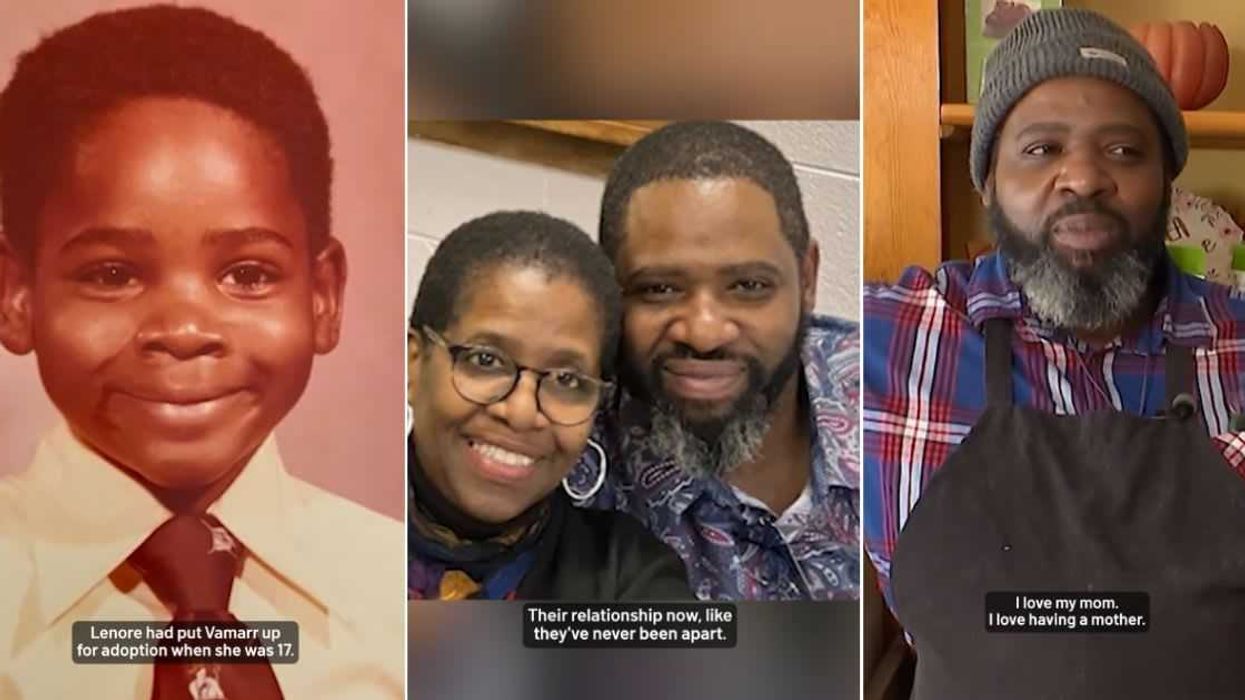
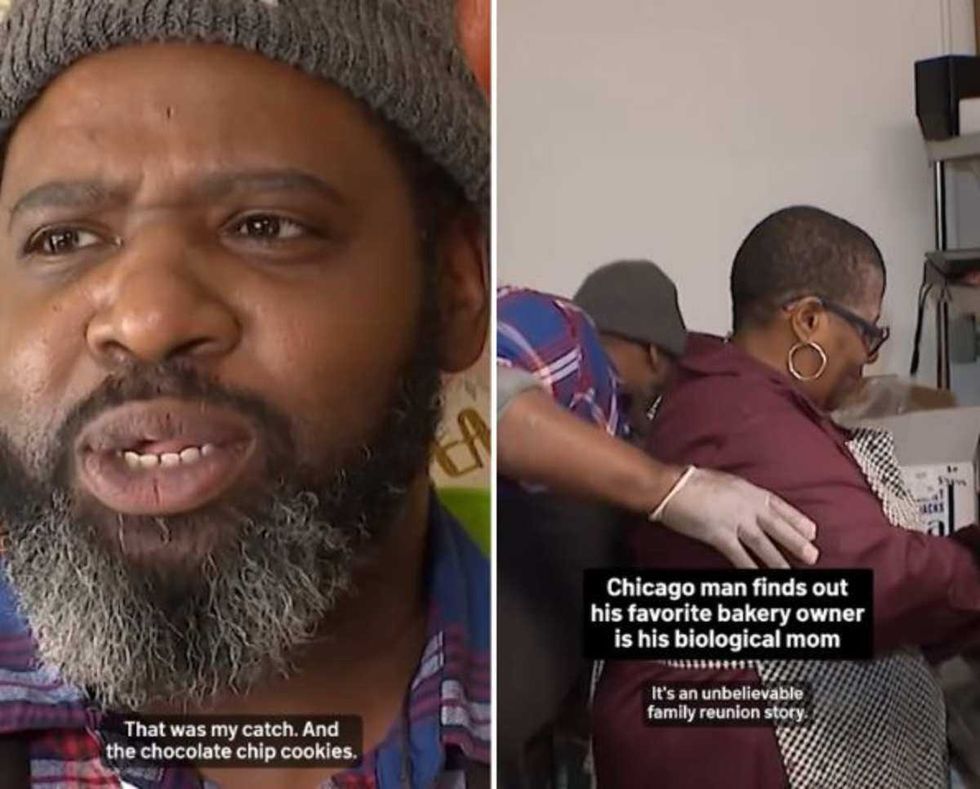 Screenshots of the man talking to the camera and with his momTikTok |
Screenshots of the man talking to the camera and with his momTikTok | 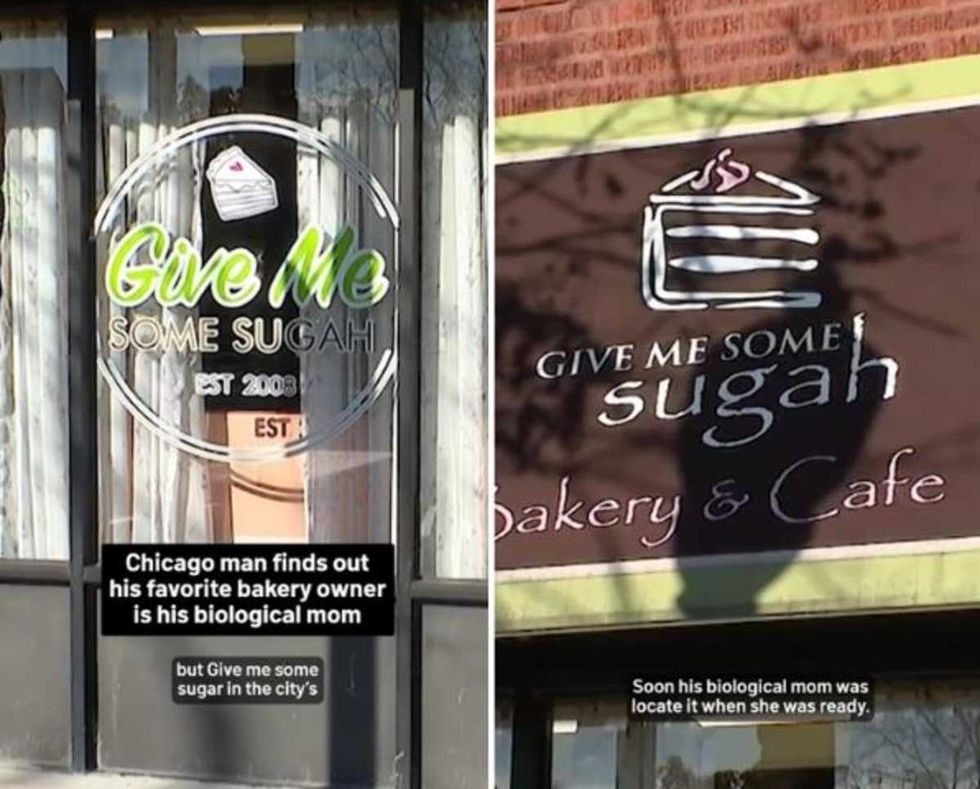 Screenshots of the bakery Image Source: TikTok |
Screenshots of the bakery Image Source: TikTok | 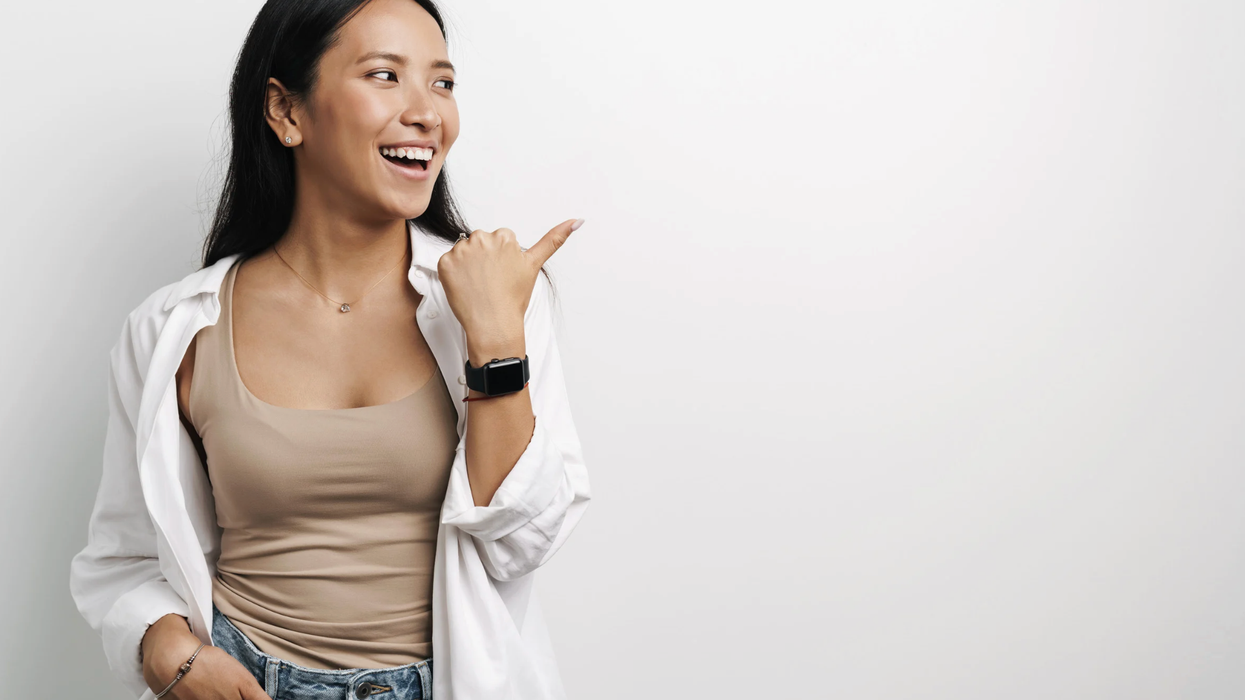
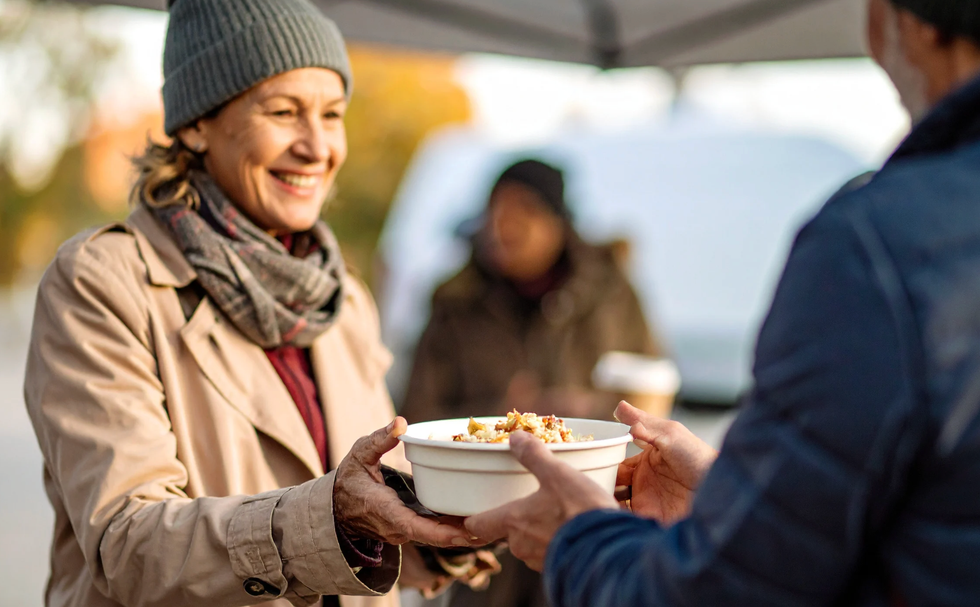 A woman hands out food to a homeless personCanva
A woman hands out food to a homeless personCanva A female artist in her studioCanva
A female artist in her studioCanva A woman smiling in front of her computerCanva
A woman smiling in front of her computerCanva 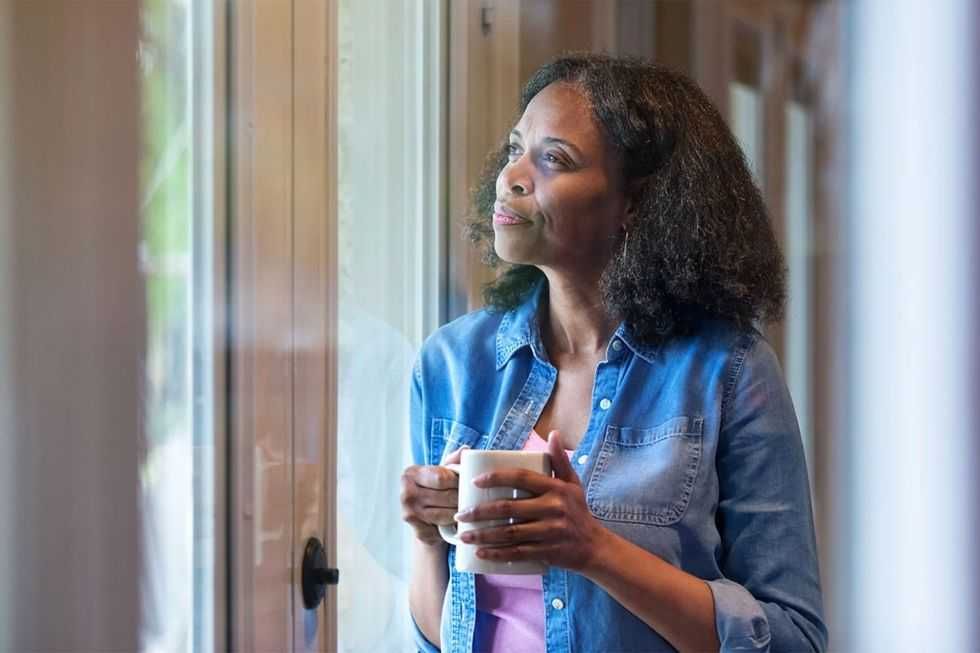 A woman holds a cup of coffee while looking outside her windowCanva
A woman holds a cup of coffee while looking outside her windowCanva  A woman flexes her bicepCanva
A woman flexes her bicepCanva 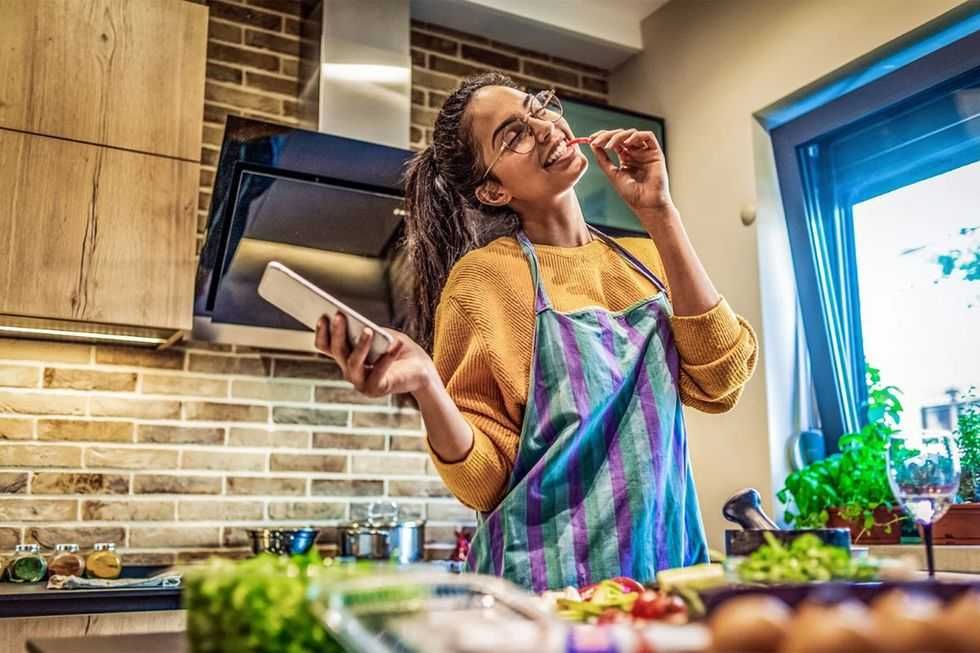 A woman cooking in her kitchenCanva
A woman cooking in her kitchenCanva  Two women console each otherCanva
Two women console each otherCanva  Two women talking to each otherCanva
Two women talking to each otherCanva  Two people having a lively conversationCanva
Two people having a lively conversationCanva  Two women embrace in a hugCanva
Two women embrace in a hugCanva 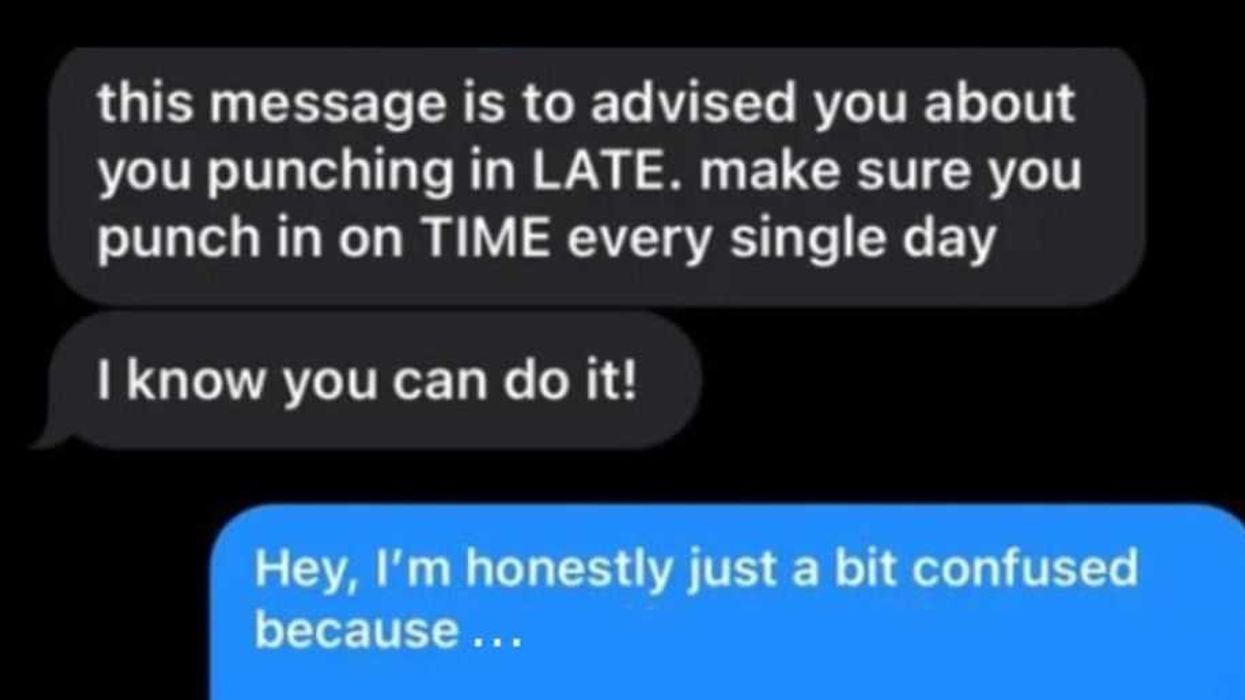
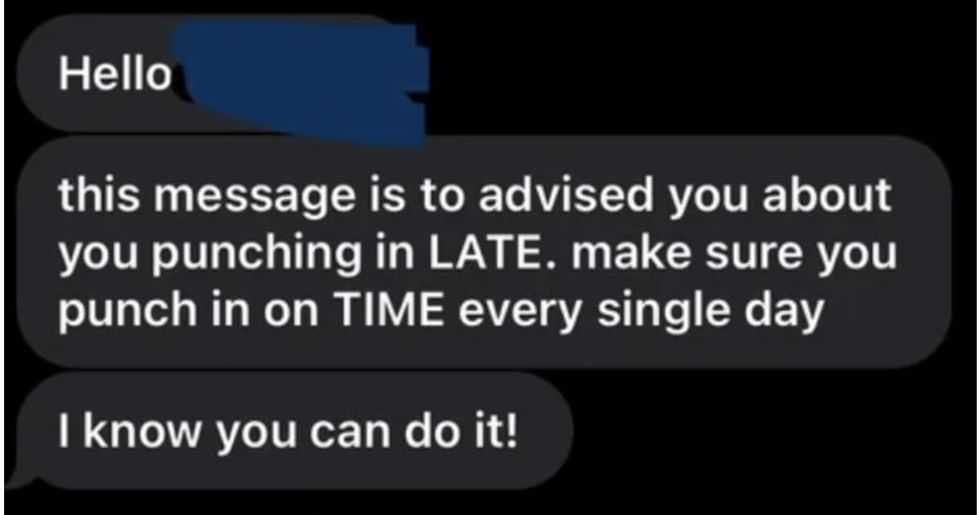 A reddit commentReddit |
A reddit commentReddit | 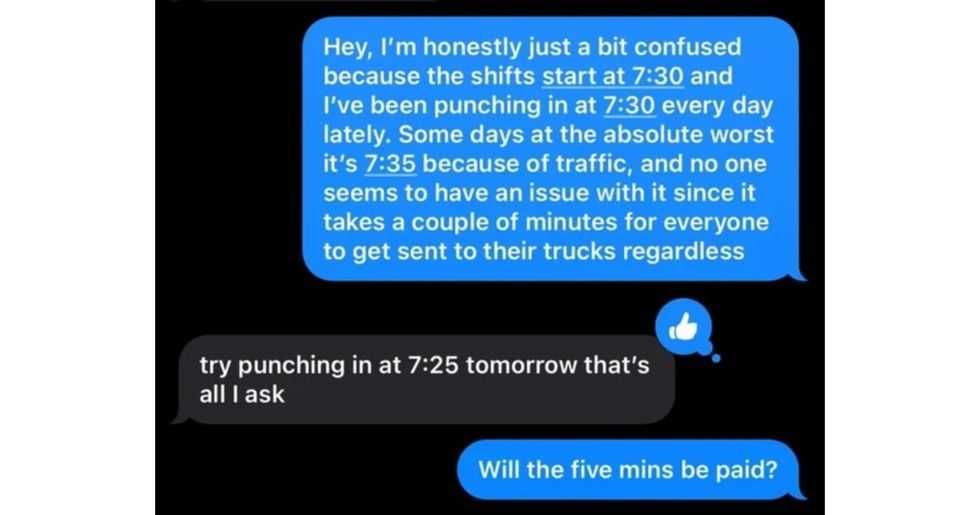 A Reddit commentReddit |
A Reddit commentReddit | 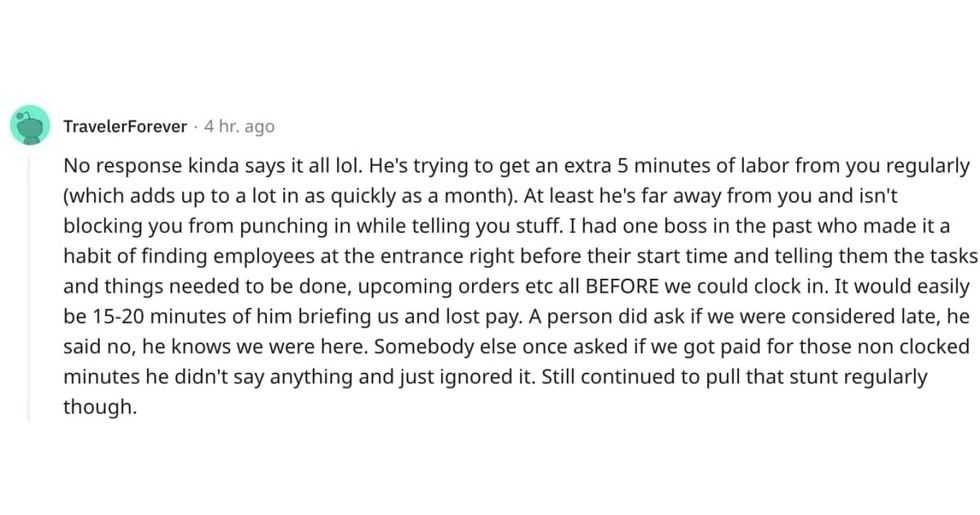 A Reddit commentReddit |
A Reddit commentReddit |  Stressed-out employee stares at their computerCanva
Stressed-out employee stares at their computerCanva
 Who knows what adventures the bottle had before being discovered.
Who knows what adventures the bottle had before being discovered. 
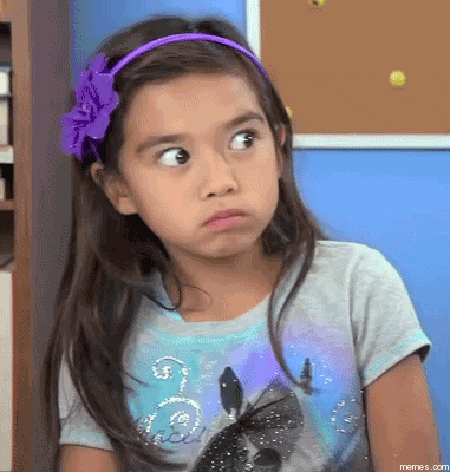 Gif of young girl looking at someone suspiciously via
Gif of young girl looking at someone suspiciously via 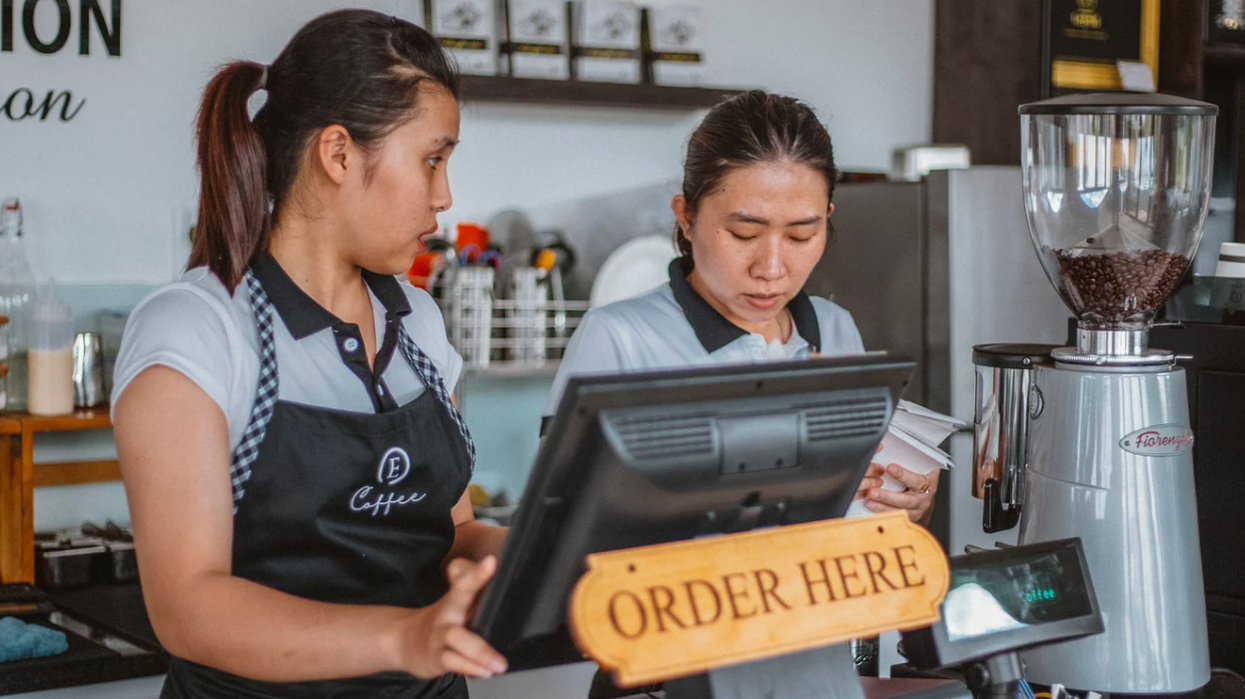
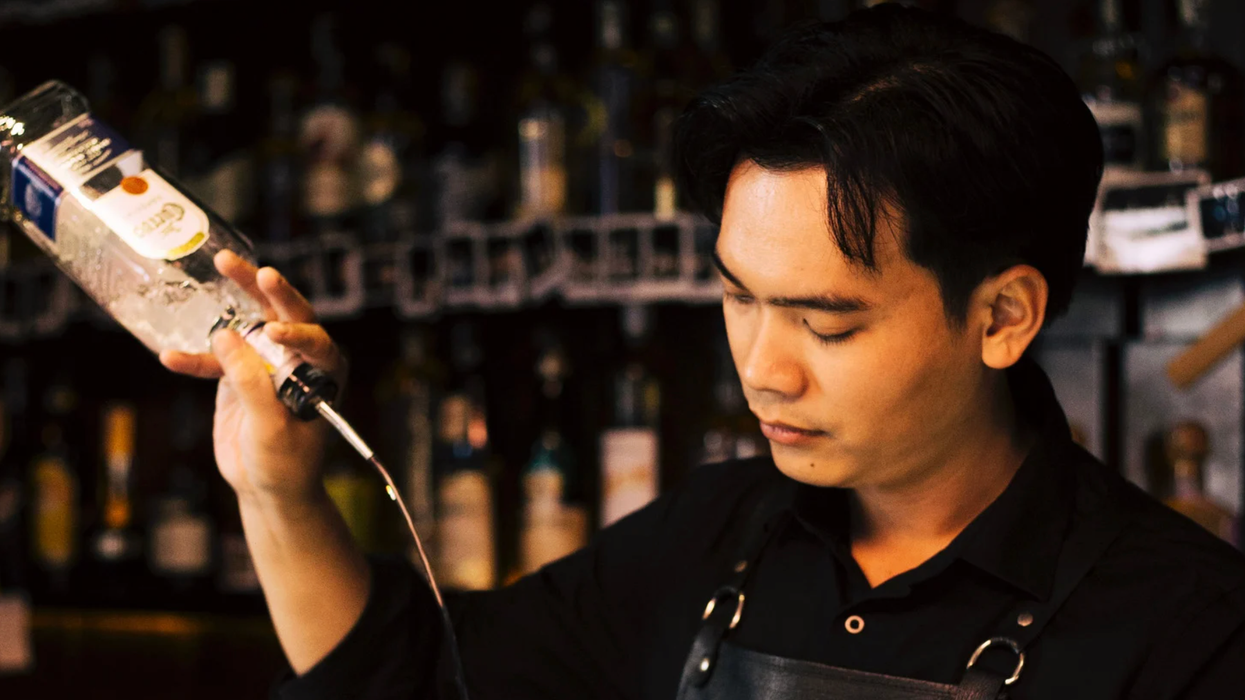
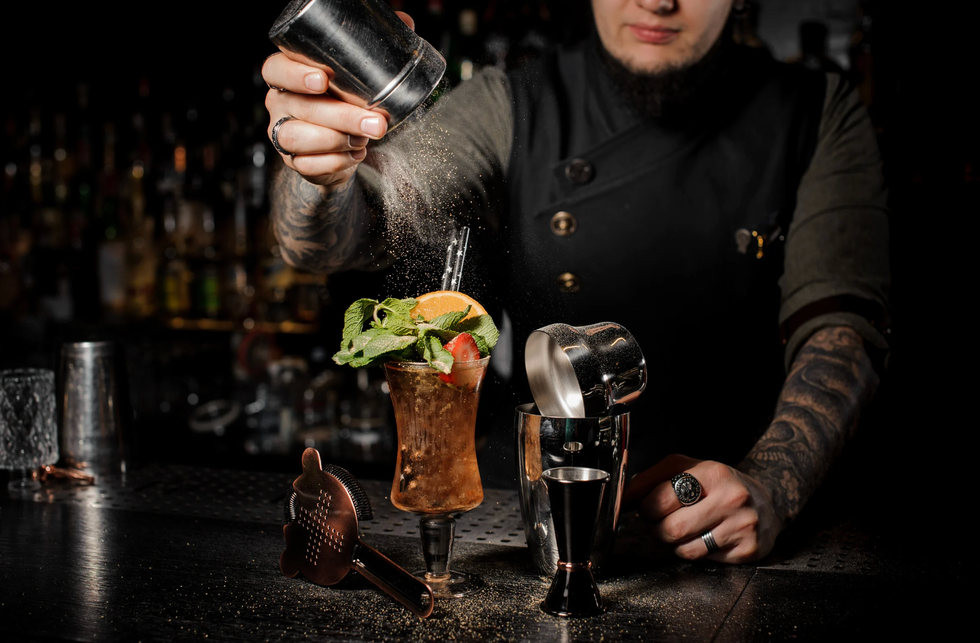 A bartender makes a drinkCanva
A bartender makes a drinkCanva